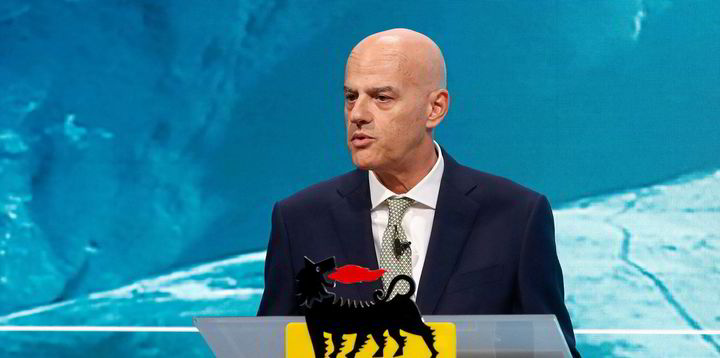Italian energy giant Eni has introduced gas into the Tango floating liquefied natural gas vessel offshore Congo-Brazzaville.
Eni on Thursday said that gas introduction had been achieved in record time, only 12 months after the final investment decision. Following completion of the commissioning, Tango FLNG will produce its maiden cargo by the first quarter of 2024.
The Tango FLNG facility, which has liquefaction capacity of about 1 billion cubic metres per annum, is moored alongside the Excalibur floating storage unit, using an innovative configuration called “split mooring,” which Eni said is being implemented for the first time in a floating LNG terminal.
The operator last year bought for around $700 million the Tango FLNG vessel from Exmar.
Congo LNG will enhance the gas resources of the Marine XII permit and achieve approximately 4.5 Bcm per annum of plateau gas liquefaction capacity through phased development and with a target of zero routine gas flaring.
A second FLNG facility with a capacity of about 3.5 Bcm per annum is currently under construction by Chinese contractor Wison Heavy Industry and will begin production in 2025. The entire volume of LNG produced will be marketed by Eni.
Article continues below the advert
The Italian player has been operating in Congo-Brazzaville for 55 years and today is the only company active in the development of the country’s gas resources.
Eni currently supplies gas to Congo-Brazzaville’s CEC, which provides 70% of the country’s power generation capacity.
Eni added it is “strongly committed” to promoting the nation’s energy transition through several initiatives, including the Oyo Center of Excellence for Renewable Energy & Energy Efficiency, which has recently been handed over to the country’s Ministry of Higher Education, Scientific Research & Technological Innovation, which will manage it together with the United Nations Industrial Development Organization.
Eni also is working on the production of agricultural raw materials, not in competition with the food supply chain, to be used as biofuel feedstocks. The operator has also started distributing of stoves to local communities, with the goal of reducing biomass consumption and the emissions associated with combustion.

